| Early Spring Date: | April 24 |
| Late Spring Date: | May 24 |
| Best Dates to See in Spring: | April 27 - May 15 |
Spring: Rose-breasted Grosbeaks are common visitors to Monticello Park. When they pass through the Washington metro area, they often stop at bird feeders, including ones at houses adjoining the park. Your best chance to see one in the park is during the first two weeks in May. They breed in Canada, the northern United States, the Appalachian Mountains, and the Great Plains; they winter in Central and South America and the Caribbean. The ones who breed in Panama and northern South America tend to come to the eastern part of the breeding range, while those who winter in Mexico and the northern part of Central America head toward the Great Plains. The birds who breed in the Great Plains often interbreed with Black-headed Grosbeaks, a closely related species in the western United States.
Fall: An average of only 2 or 3 Rose-breasted Grosbeak are recorded each fall at Monticello.
Where to See Them in the Park
Rose-breasted Grosbeaks frequently sing and call from the canopy. They often go to the stream to bathe and drink. They tend not to move quickly, and on their way down, they often linger before making each move toward the stream. When they are in the park, you have a good chance to see one.
Physical Description
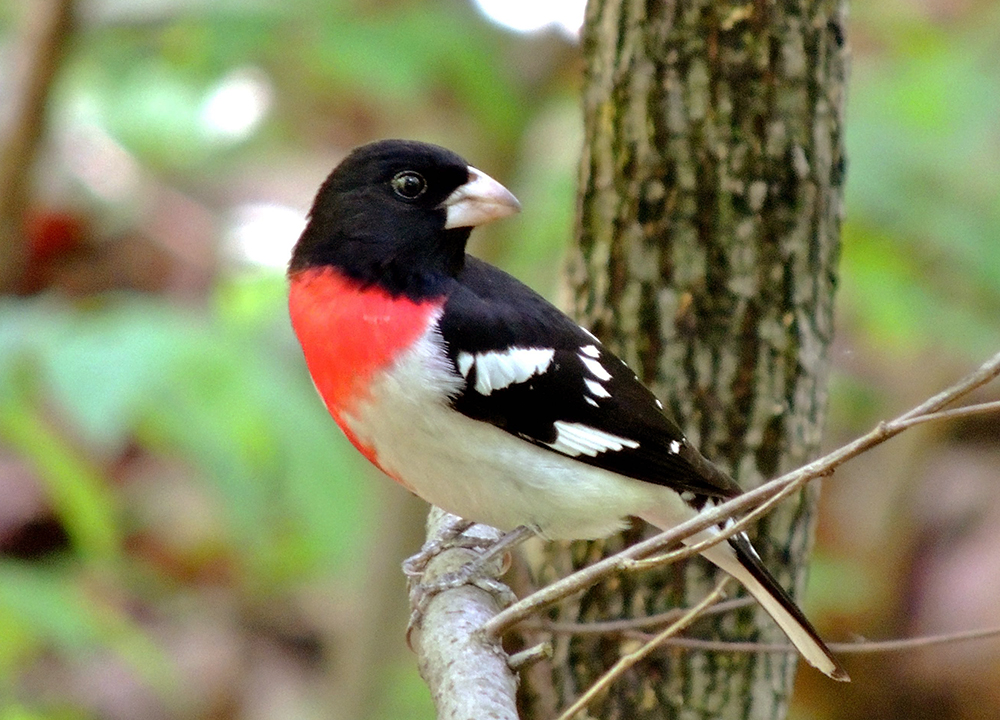
Male Rose-breasted Grosbeaks look striking and are one of the most popular species at Monticello each spring. The head and throat are jet black. The wings and uppertail are black, with white spots and patches. The underparts are white, except for a large downward-pointing triangle of rose on the breast. The large bill is light-colored. When they raise their wings, the underwings flash pink. You are not likely to mistake a male for any other species.
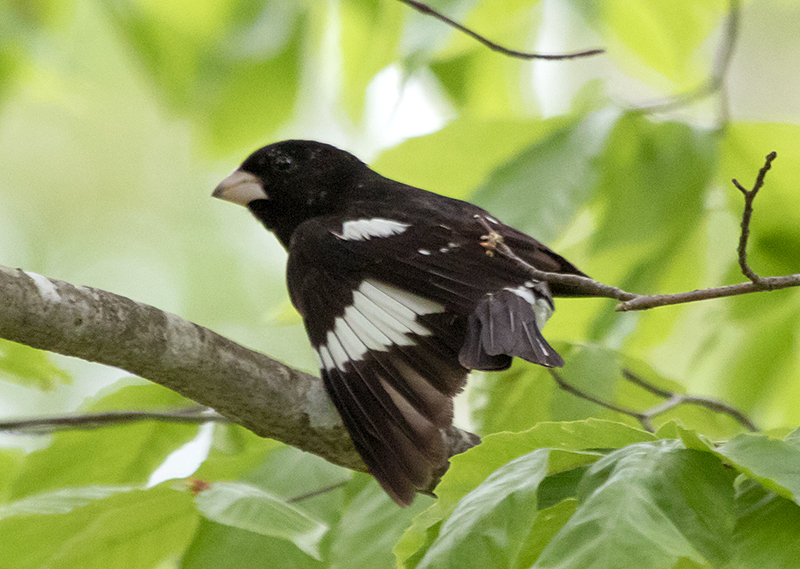
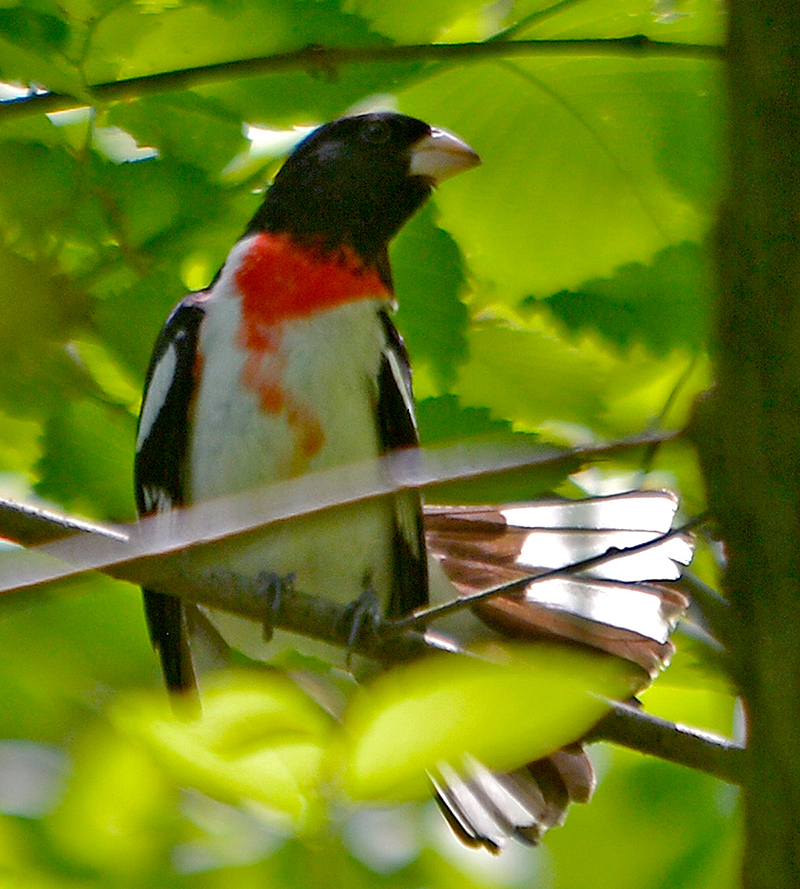
The male's wings and three outer tail feathers contain a lot of white.
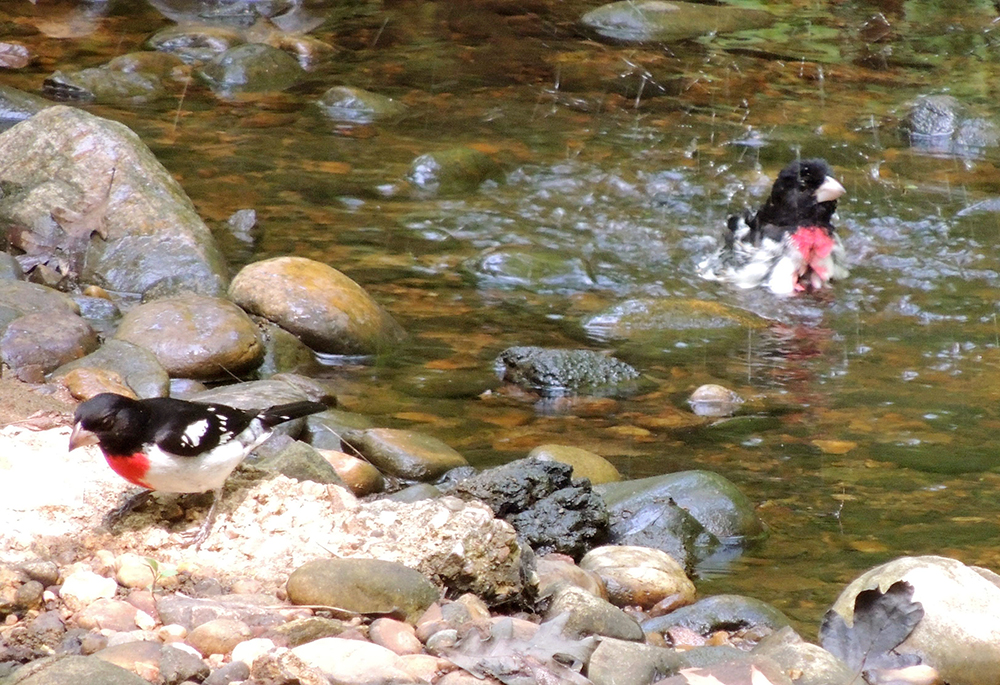
Rose-breasted Grosbeaks often take long baths. Sometimes, multiple grosbeaks will enter the stream together.
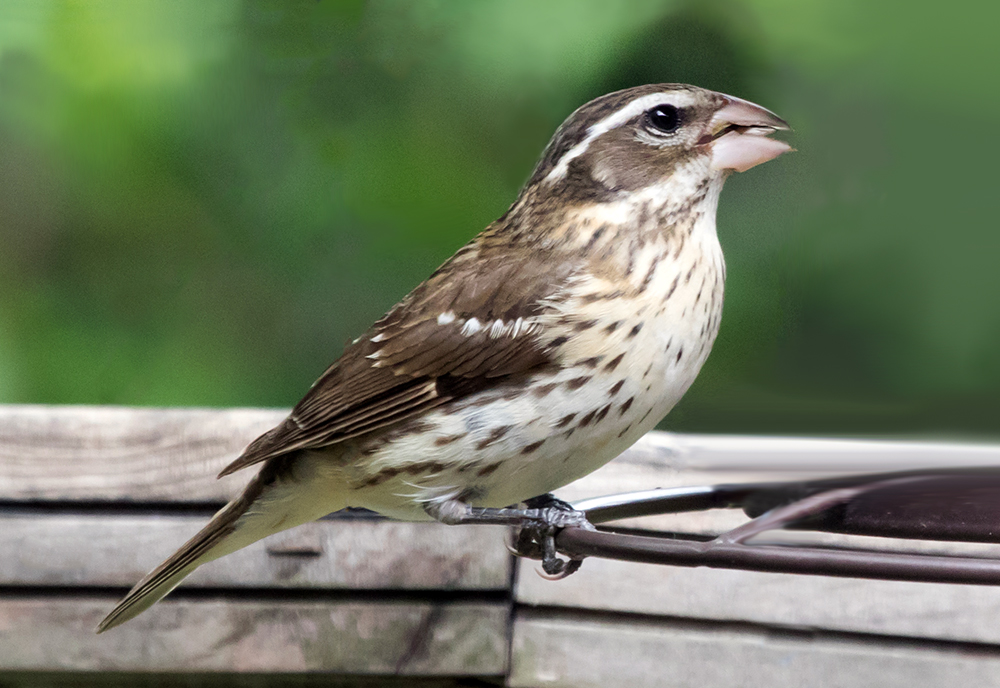
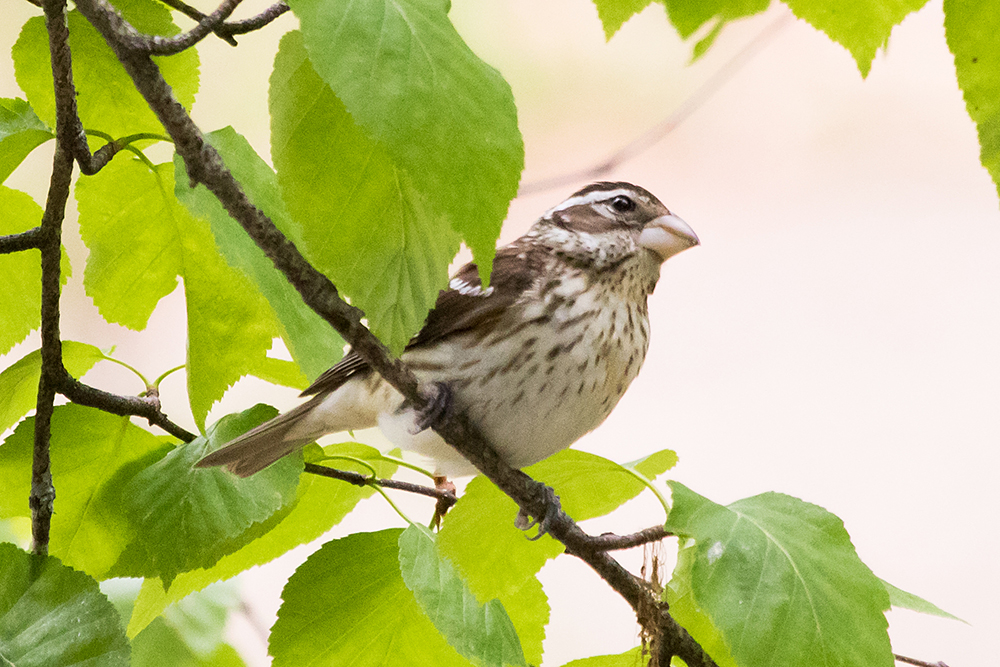
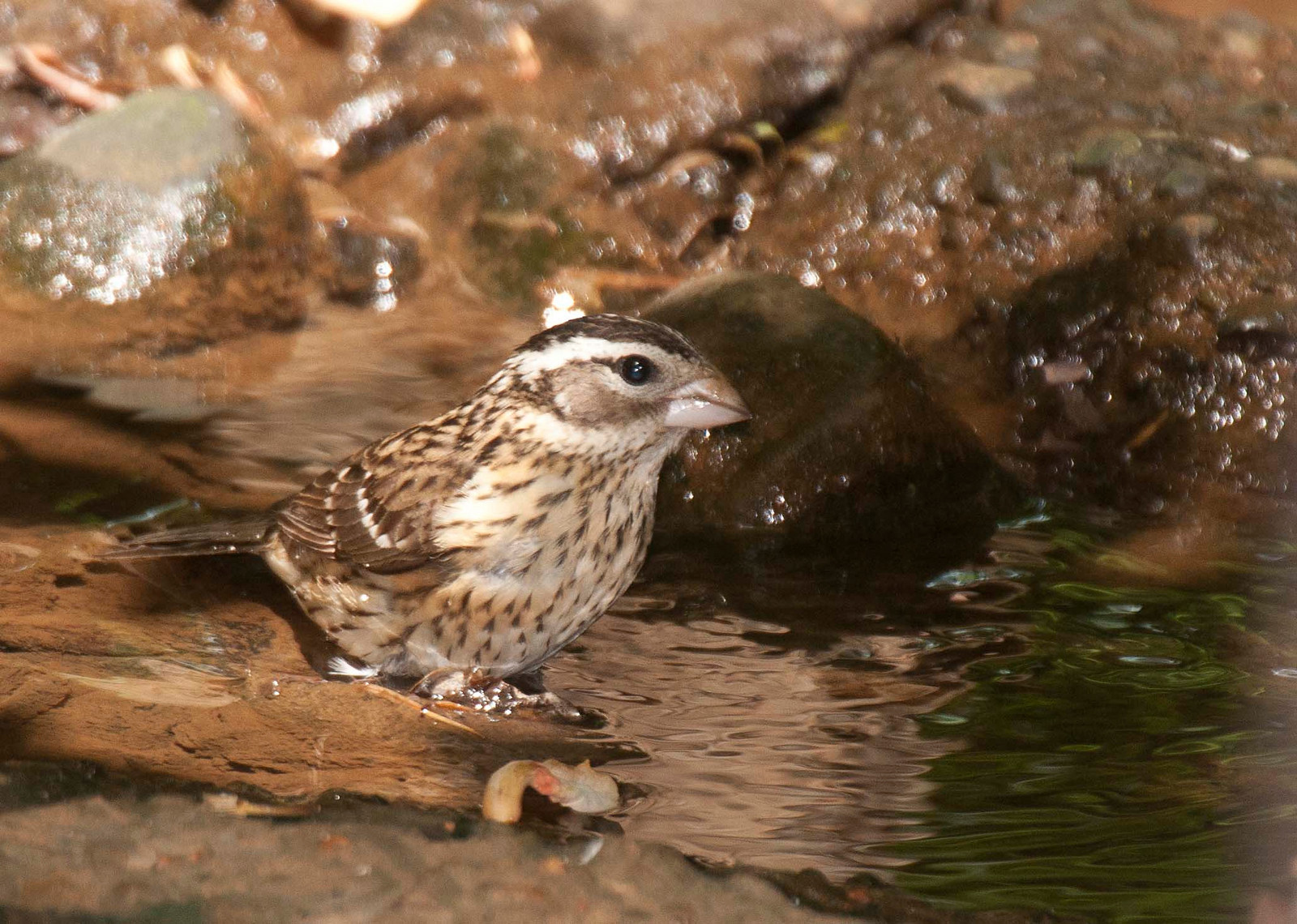
Females look like a large sparrow with a large bill. They are brown birds with a prominent white line over the eye and another white line under the dark cheek. The underparts are streaked, and the bill is light-colored. They have a white throat and two white wingbars. The size of the bird and the large bill differentiate them from female Purple Finches.
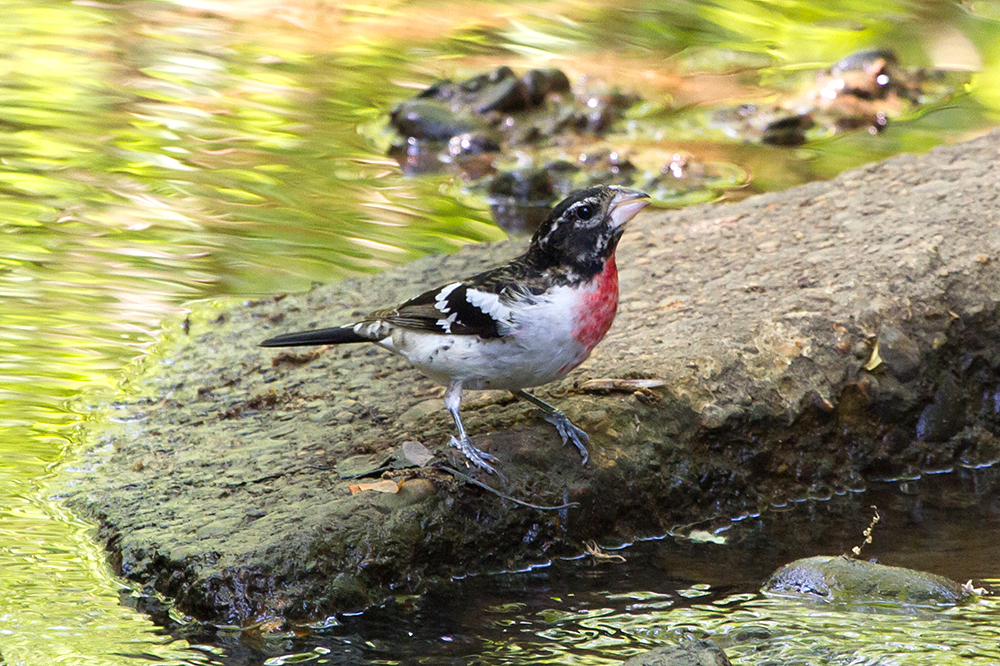
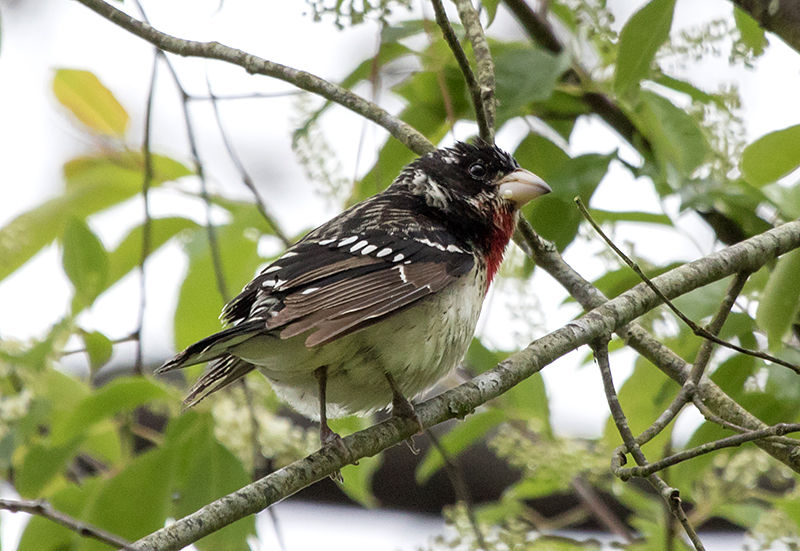
Some immature males look like blotchy versions of the adult male.
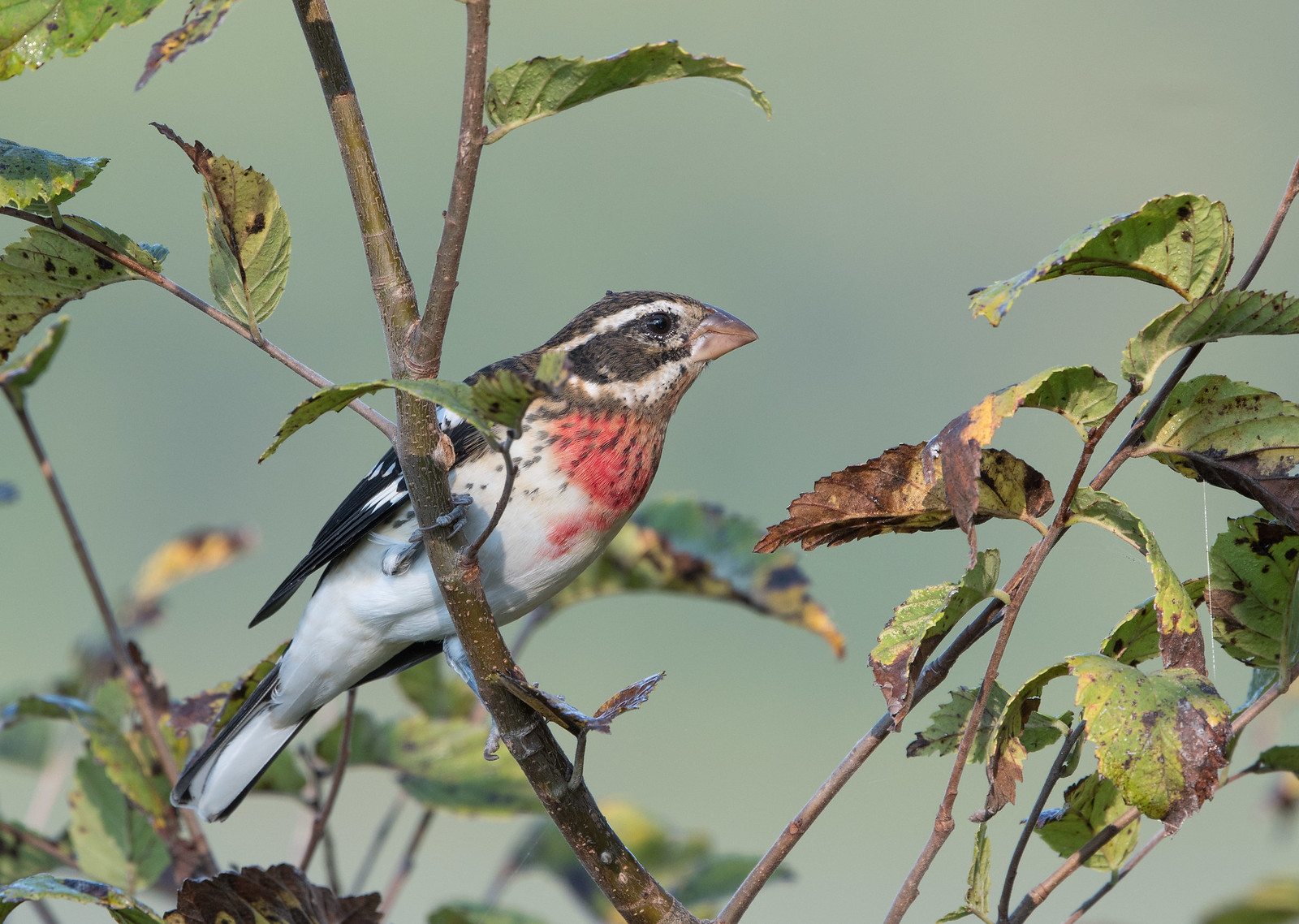
Fall: Males in the fall have a brownish back and a reduced amount of red on the breast. Females are streaky brown with a tan wash on the breast. Both the male and female in the fall have white marks on their wings.
Vocalizations
Rose-breasted Grosbeaks sound like a robin with a sweeter voice. They spend a lot of time in the canopy, so you often hear them singing before you see them. The call note is a single squeak. Sometimes, a Rose-breasted Grosbeak will call rather than sing, so it is important to learn the squeak. Grosbeaks are among the many birds who sometimes sing a whisper song, which is a quieter version of their normal song.
Hear the vocalizations of the Rose-breasted Grosbeak.
Notes
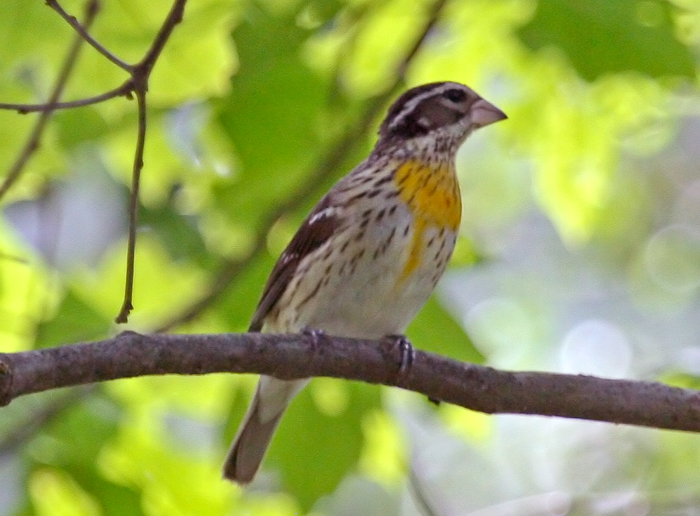
The French name for the Rose-breasted Grosbeak is Cardinal à poitrine rose, which means cardinal with a chest of rose. Not all males have a rose breast. An immature male Rose-breasted Grosbeak who visited Monticello had a condition called xanthochroism, so his breast was yellow. The usual dark pigments in the bird's feathers were absent, so yellow had become dominant. It could have resulted from either a genetic abnormality or factors related to the bird's diet. Cardinals, tanagers, and finches also can be xanthochroistic.
Origin of Names
Common Names: Rose-breasted from the plumage. Grosbeak from the large bill.
Genus Name: Pheucticus means shy, evasive.
Species Name: Ludovicianus means of Louisiana, where the first specimen was collected.
Rose-breasted Grosbeak video footage
Return to the Index
